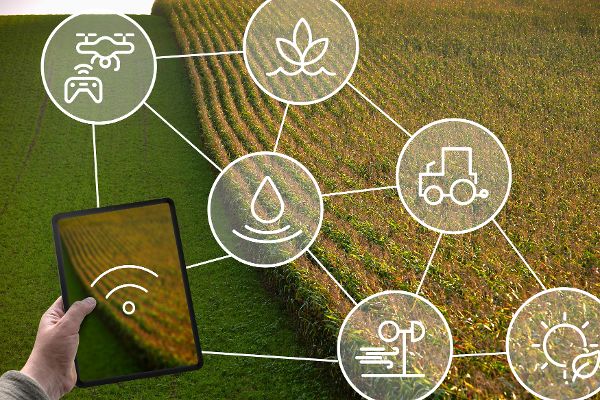Integrated Administration and Control System - IACS

IACS is an EU-wide, gradually introduced system for the implementation and administration of the Common Agricultural Policy (CAP) in the EU Member States.
IACS
IACS ensures that area- and animal-related CAP payments in all EU countries are managed and controlled in a standardised way with the help of technology. On the one hand, it helps the AMA to fulfil its tasks as a payment and control body. On the other hand, it supports farmers in submitting correct applications.
IACS is based on the interaction of various digital databases. It is by no means a static system, but is constantly evolving through technological innovations and, as a result, also becomes more efficient. IACS involves an annual process that begins with farmers submitting their aid application using a pre-filled online form. On the basis of the application, the paying agency carries out on-the-spot and administrative checks. Payments are finally granted at the end of the year.
The annual applications and notifications are made electronically using a geodata-based online application (multiple application). The multiple application must be submitted using the online application provided after a qualified electronic signature by the applicant. If necessary, the applicant can obtain technical assistance from one of the district chambers of agriculture.
Efficient and appropriate use of CAP remunerations for services requires effective controls. This responsible task is carried out by AMA in its function as paying agency. As a result of ongoing technological developments and the use of orthophotos, satellite or terrain elevation data, the system can be continuously improved. Overall, IACS is an important tool for administration and advisory services in Austria and has developed into a central information system about and for agriculture.
IACS GIS
A large proportion of the agricultural support measures and payments for services are based on support per hectare of agricultural land.
The general principle of digital area applications is therefore that all agriculturally utilised areas for which direct payments, ÖPUL premiums or compensatory allowances to be granted are clearly identified and localised in the respective multiple application and that area details are confirmed.
To this end, the European Union provides an identification system for agricultural parcels as part of IACS. In this context, also the mandatory use of computerised geographical information system techniques (GIS), including aerial or spatial imagery, is prescribed.
In Austria, agricultural parcels are identified using cartographic documents that include an aerial photograph and the graphical data of the individual field plots (see http://www.eama.at).
Eligible areas are determined in the IACS GIS by ensuring high-quality digitisation that corresponds to the actual use and enables the location and size of the field plots and parcels to be determined. Applicants are obligated to check, on an ongoing basis, that the digitisation of their fields and parcels is up to date and correct, especially after new aerial images have been imported, and to map the cultivation boundaries in nature in the IACS GIS.
Area monitoring
Area monitoring is a multi-temporal check of the eligibility criteria (for agricultural activities or practices) on parcels for which a support is applied for by means of the information contained in Sentinel satellite data (no area measurement). In principle, it is therefore checked whether an area applied for is used for agricultural purposes, whether the crop applied for is correct and whether certain eligibility criteria are met.
From 1 January 2023, Member States have to use an area monitoring system for direct payments and compensatory allowances, and from 2024 at the latest also for ÖPUL. In some other Member States, this system has already been in use since 2018.
The system brings a number of advantages and greater flexibility for farmers. This is because the use of area monitoring can reduce the number of on-site inspections. It is also possible to make corrections to applications without penalties in the event of anomalies detected by the area monitoring system. Very long deadlines apply for these corrections and they can also have a premium-increasing effect.
From 2025 at the latest, geolocalized photos will be able to support area monitoring by means of satellite data. There is an AMA photo app, AMA MFA Photos app, for this purpose, which makes it possible to quickly and easily submit photo evidence or a correction to AMA for a plot for which support is applied for.
NeuNeu
The AMA-MFA photo app is available for download. The quick guide, user manual and videos on area monitoring can be accessed via the AMA website.